How to choose a parquet board: what options are there and which is better?
Parquet board - a modern floor covering made of natural wood. But it’s bad luck, the range is increasing every year, and the choice becomes a real problem, because, despite the growing popularity, you need to know all the pros and cons of this material. Therefore, in this publication we will talk about how to choose a parquet board, so that it suits both quality, pleases, and serves a long period.
Typically, the composition of this finishing material includes three layers:
- the upper one consists of valuable tree species: oak, teak, beech, walnut, cherry. But some manufacturers use acacia, wenge, merbau, that is, exotic breeds, in the basis of the facing layer;
- medium - most often these are strong plates: glued thin layers of coniferous wood;
- lower - spruce wood 2 mm thick.
It turns out that the total thickness of the parquet board consists of the thickness of all three layers, and its quality directly depends on the thickness of the upper layer.
It is important to know that the thicker the top layer, the greater the number of polishes the parquet board can withstand.
Content
Dimensions matter
In order to find out how to choose the right parquet board, you should have an idea of its acceptable sizes:
- along the length - 2-2.5 m;
- width - up to 20 cm;
- thickness ranges from 7-26 mm.
And now a few recommendations on this subject:
- a seven-millimeter board does not lend itself to hitching, because it has veneer as a lining;
- a ten-millimeter board is somewhat stronger, but even though the top layer is close to 2.5 mm, such a parquet board still requires a neat attitude: strong mechanical movement will lead to scratches and abrasions;
- the best option is a thickness of 13-15 mm, because in this case the thickness of the working layer is 4 mm. It is such a parquet board that most often fits in a living room;
- if this flooring will be used in public places, it is better to choose a board with a thickness of 20-22 mm, then the working layer will be more than 4 mm;
- the thickness of the parquet board above 25 mm is a particularly durable material that can withstand significant mechanical stresses: the emphasis is on both the inner and the upper layer. This type of board can be laid not only on the concrete base, but also on the floor logs (relevant for old houses).
What is plank selection?
The parameters of the front layer in many respects affect the quality of the floorboard, the most important indicator is the selection of planks. What does this mean? Simply put, this is sorting, selection by appearance, since the appearance of the same breed can differ significantly, depending on the type of selection itself. The main factors that are taken into account during the selection: sawing a tree trunk, color, wood pattern, defects.
Radial cut is carried out parallel to the length of the trunk, and wood fibers are located along the surface of the die. Such a parquet board is characterized by the most even color, pattern, level of stability.
Rustic cut is performed at any angle, this parquet board is the most heterogeneous in color and pattern.A tangential cut, that is, one that runs tangentially to the annual rings: an individual pattern appears on each die.
Parquet board selection takes into account the type of cut. The main producers distinguish these types of breeding:
- Natur - Planks of tangential, radial cut. The flooring from such a parquet board has color transitions, a variety of patterns. No defects are allowed except for the presence of small diameter knots.
- Select - Undoubtedly, the highest quality parquet board, because only the radial cut strips are included in the selection. They are characterized by evenness, uniformity of color, beautiful woody pattern. Parquet board Select - ideal for interior decoration of a classic style. Such a parquet board has the maximum indicators of wear resistance, water resistance.
- Rustic - selection does not go through the cut, but is selected according to the quality of wood, color. Rustic has the most lively, bright color, although it is quite possible that for some it seems a little motley. Knots are also present, and sapwood (wood features) make the drawing individual and interesting. Rustic parquet board is an excellent solution for a country style interior.
It should be noted that the cost of a parquet board to some extent depends on the type of selection, for example, a Select board is more expensive than Rustic, but its consumer performance is much higher, and restoration will have to be done much later.
Which is better: single or multi-lane board?
The number of dies of the top layer is a significant indicator, but which is better: single-band or maybe multi-band?
A single-lane board, also called Full Plank, has one row of slats in the face layer, that is, the top layer is not divided into separate segments. This is a whole piece of wood, so it is on a single-lane board that the richness and beauty of the wood structure stand out most clearly.
Depending on the type of selection, boards of the same breed differ in patterns, shades, but in general they demonstrate the visual advantages of the floor. If a single-lane board has bevels in the corners, this is an excellent option for deck laying, since it is very similar to a massive board made of valuable wood, and it costs less.
A chamfer simulates the seam between classic floorboards. With the help of a single-lane board, the room is visually expanded, its scale and spaciousness are emphasized. In large rooms, she also looks gorgeous.
A two-lane parquet board is characterized by an upper surface made up of two lamellas fitted to each other. The structure of such a board is quite pronounced, it is diverse and depends on the type of selection. Lamels can be continuous, divided into 2-3 segments.
Three-lane board - 3 rows of parallel slats, mainly offset along the length. This is the most popular and traditional type of parquet board with a classic pattern of natural parquet. As for the varieties, it can be a deck drawing, wicker, Christmas tree. It fits perfectly into any interior, and in a spacious room, and in a small room.
Multiband board - the latest developments of manufacturers, quickly conquering the market. The top layer is assembled by hand (from strips of small width), the decorative layer is ideal, because the edges are very high-quality, there are practically no traces of joints.
Such a parquet board fully reflects the color richness of wood, the flooring is excellent, and the shades of the finished product are saturated. A multiband board can be called an original interior solution, it looks advantageous in a room that is not overloaded with details, introduces bright accents into it.Defects that can occur over time, almost imperceptible, is another significant advantage of such a board.
Tree variety
Which parquet board to choose: cherry, oak, maple ... Yes, the question is not simple, because at present large manufacturers are offering consumers a parquet board with a top layer of European, American, exotic trees. It all depends on the individual taste, but here one should be guided not only by personal wishes, but also know the characteristics of the operation of each breed. So, now in more detail.
- Oak is an indisputable leader, hardness is an important property, its high indicators indicate high wear resistance. Also, a board with a decorative layer of oak undergoes little abrasion and lasts longer. Stability is another excellent characteristic; linear dimensions with moisture differences are well preserved. Oak wood is a “not capricious” breed; it does not dry out under changing operating conditions and does not deform.
- Beech is a breed known for its beauty. This is a great choice for a children's room because of the calm light colors. But he cannot boast of high stability. Special heat treatment increases the hardness of beech wood - the so-called "smoky" decors.
- Cherry is a strong wood of exquisite beauty, it has a rare pink hue, as well as all tones from coffee to light.
- Maple - light wood, beautiful, with light cream shades, stable, strong enough.
- Walnut - dense wood, stable, unpretentious in leaving, with excellent operational indicators. It has a bright, pronounced structure, hardness is only slightly less than oak.
It is important to know that a room humidity of 40-60% is the most preferred level for parquet.
If we consider exotic rocks, we can say that they have good hardness, are not afraid of shock loads, but the level of stability can fluctuate. The most popular are:
- Merbau is an Indonesian breed, a noble brown color, golden streaks. This wood is saturated with oils, is not affected by rot, fungus. Merbau is such a hard rock that it is difficult to process;
- Kempas is a species from Africa, the wood is very beautiful, showy golden-orange colors, dense structure, high hardness. A kampas parquet board is not easy to scratch, but this exotic breed is sensitive to moisture differences;
- Wenge is a dark, almost ebony tree with an original pattern. The breed excellently resists bending, pressure, it is saturated with oils, strong, wear-resistant. Wenge is a rare breed, so it is very expensive, but it will serve for a very long time.
Also, choosing a parquet board, you need to pay attention to the carrier layer. Most manufacturers offer conifers: spruce, pine, they provide strength and stability to the floor. Plus, there is a bearing layer of hevea, a southern tree with resinous wood, which has increased moisture resistance. If the humidity level is unstable - such a parquet board is less prone to deformation.
Which type of lock is better?
This is one of the important characteristics, because this particular parameter affects the tightness of the boards to each other, as well as the quality of preservation of the original assembly. The best locks are considered UniClinic, T-Lock systems. Therefore, if you need a long service life of the floorboard, you need to stop at such locks.
What is better to cover - oil or varnish?
Parquet board is varnished on special equipment, in the factory. How does this happen? First, putty is applied to the top layer, then a primer layer: it raises the pile, securing the top.Then the tree cycles, the “interference” is removed and only after that seven layers of varnish are applied.
The next step is curing by hot pressing. To do this, the lacquered board is placed in an air chamber, where it is not only dried, but also treated with ultraviolet rays. UV rays are actively involved in hardening the varnish and allow the use of water-soluble acrylic varnishes. It turns out that the advantage of such a varnish is the absence of formaldehyde, acetone and similar harmful solvents.
Covering the front surface with oil allows you to convey the game of the selected wood species. The texture acquires deep clarity, the parquet board does not shine, but emits a velvet glow that allows you to admire the rich shades of natural wood.
You can buy such a board without worrying about environmental friendliness, because the material is completely safe. Oil penetrates the tree, impregnates it, but does not violate the natural process of air exchange. Also, a parquet board covered with oil needs specific care: every 4 months it is necessary to treat the floor with oil-based or wax-based compounds. These tools help to preserve the quality and original appearance of the board.
From all the above information, one can draw the correct conclusion - the choice of a parquet board is huge, so you need to be serious about your purchase, so that the flooring brings beauty to the interior and lasts a long time.

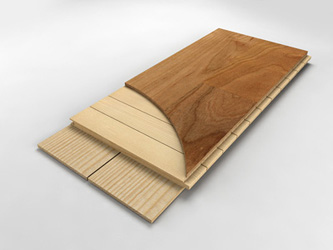
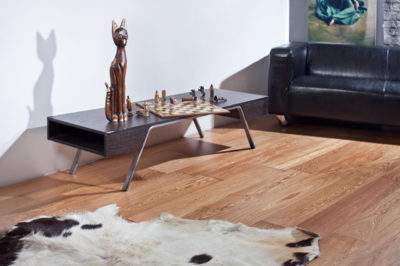
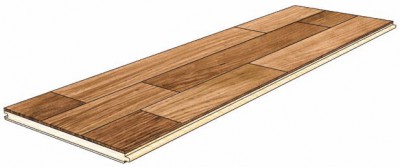
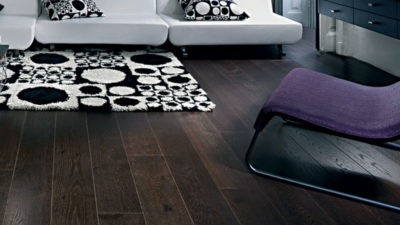

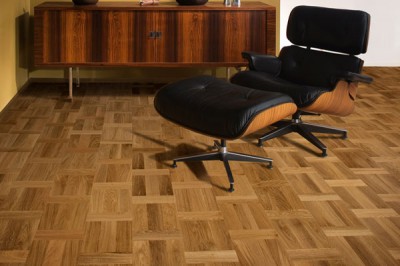


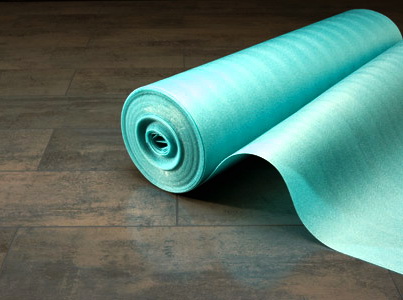
5 comments